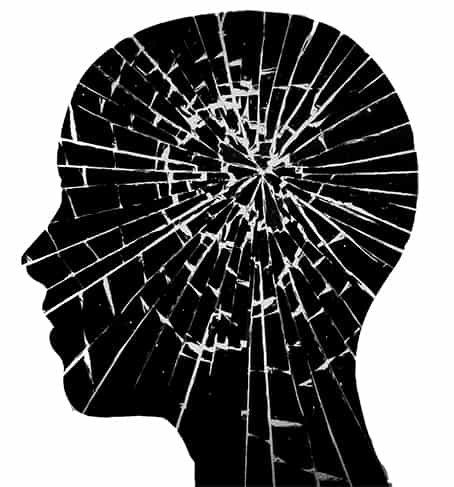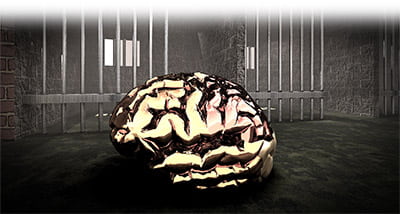The Insanity Plea
Introduction
 Insanity is a highly interesting topic when it comes to the law, and at the same time, is a topic which demands the utmost thought and care. Mental health, in general, is a topic that is consistently undergoing further research due to how it impacts people’s lives. The concept of the insanity plea is one which has existed for some time now, though it most commonly comes up and is used in the United States.
Insanity is a highly interesting topic when it comes to the law, and at the same time, is a topic which demands the utmost thought and care. Mental health, in general, is a topic that is consistently undergoing further research due to how it impacts people’s lives. The concept of the insanity plea is one which has existed for some time now, though it most commonly comes up and is used in the United States.
While the use of the plea is not too common in the real world, it is often a well-discussed topic among lawmakers and the ordinary layman. It has entered into pop culture and receives mention in TV shows, books and movies with one of the most famous and popular being ‘One Flew over the Cuckoo’s Nest’. The premise of the film is far more substantial than merely the concept of the insanity plea, though it is a crucial moment.
The original concept of the insanity plea only ever arises in criminal cases, and the purpose of the defence is to ensure the protection and fair treatment of those who are mentally unstable and not in a position to be held liable for their actions. Punishing one who falls under the category of insane is ethically wrong, and the laws that are in place seek to deliver civil justice.
In this article, the ideas and reasons, the laws and regulations and impacts of the insanity plea shall all receive discussion from the perspective of the nation that most often sees its use and has the most experience with it — the United States of America.
The History of the Insanity Plea
Only a few hundred years ago, insanity was generally not an excuse that could be used to defend one’s self in the courts. People were punished severely and solely based on crimes committed. Of course, many things have changed and received alterations since then. There is now a far greater reliance on evidence, and the methods of obtaining evidence are far more reliable. Our scientific and medical understanding has also significantly improved since then, though individuals have existed through time who have sought to introduce. In ancient Rome and Greece, such concepts did appear, though there was no consistent way to identify when an individual was truthful, and further identifying and diagnosing the specific mental issue.
Many centuries later than this, examples such as Edward II of England, who reigned in the early 14th century exist. Edward II specified that a person might fall under the category of insane if they should possess the mental capacity of a ‘wild beast’; this is very different from the attitude in the modern world where many complex factors require consideration, and a person's wellbeing and health is an area that receives more considerable thought.
More specific to the US, the Eighth Amendment of the Constitution prevents the use of excessive bail, fines and cruel and unusual punishments. The critical aspect of the Eighth Amendment to keep in mind here is that of cruel or unusual punishments. At the time, this was primarily intended to ensure that the penalties were not excessive when compared to the crime, and it also outlawed specific methods used in the past in executions. For example, drawing and quartering, disembowelling and burning at the stake were entirely forbidden and considered inhuman. Specific punishments were also prohibited depending on the crime such as painful labour and revocation of citizenship.
It is important to note that insanity received no explicit mention within the Eighth Amendment. With a Common Law system in place in the US, it should be remembered and borne in mind that cases and their judgements carry significant weight proceeding into the future and they often almost carry as much importance as the legislation themselves. In many cases, aspects of the laws are expanded upon and clarified, and case judgements bind courts of lower influence such as the courts of first instance. Higher courts though are not bound by the decisions of courts beneath them, and so Supreme Court decisions are practically law unless a future Supreme Court decision overrules it.
This particular topic, the insanity plea, and the Eighth Amendment protection for those deemed insane primarily came about as a result of the case of Ford v Wainwright, 477 US 399 (1986). While insanity was generally a valid excuse to avoid punishment under common law, the situation, as mentioned earlier solidified its position in the US. In this case, Alvin Bernard Ford was convicted of murder in the year of 1974. He was sentenced to death and was left on hold on death row for many years. During his time on death row, he began to experience mental health issues, and by 1982, it had diminished to such a point that he had what was consequently identified as paranoid schizophrenia.
He was looked at by multiple psychiatrists and specialists who determined that there were undoubtedly severe issues at play. Mr Ford proceeded to sue Secretary of the Florida Department of Corrections, and he won the case. The judges had a few points which they used to demonstrate the reason for their judgement. One of the reasons provided shows the earlier point concerning societal progression. The modern developed world is a more humane and considerate place in general than ever before, and not only are the punishments less brutal, but the people under judgement are also under a higher and more informed level of scrutiny — as such, punishing an insane person would fall under the category of immoral and unethical.
Further to this, the court agreed that the purpose of punishments in criminal cases is to prevent and limit others from performing the same actions in the future. Under this definition, criminal law, at least in part, exists as a deterrent to potential criminals and the punishments themselves are used as an example to others. In this case, then, sentencing an insane individual to death would not help to further this cause as a person with mental disabilities might not possess the understanding of the situation to learn from previous cases or understand the consequences of their actions.
This case was not the first in which insanity was successfully used as an excuse for crimes, though it is a crucial one as it led to the insanity plea falling within the umbrella of the Eighth Amendment, thus causing it to be a fundamental right.
The US now has a set system in place which allows them to determine whether a person is genuinely of appropriate mental instability to warrant their plea. There are a few tests that can and are to be conducted, and there is also a more solid procedure in place to follow carefully and consistently, and these will receive discussion now.
The Modern Day Insanity Plea
In the US Federal Courts, every individual can plead insanity as a defence for their crimes except in individual states including Idaho, Montana, Kansas and Utah. However, even in these states, if an individual is found to be insane, they cannot receive the same punishments as mentally healthy people; this may sound a little confusing, but it merely exists to ensure ethical and fair judgements.
 Firstly, there is the M’Naghten Test. This test arose based on the 1843 Scottish case of Daniel M’Naghten in which he had murdered the secretary of the Prime Minister. This act was performed in an attempt to assassinate the Prime Minister who the defendant believed to be responsible for certain negative occurrences in their life which were in actuality, utterly unrelated to the Prime Minister. Nine witnesses arose and claimed that M’Naghten was insane and should, therefore, receive fair treatment with this fact considered, and the jury acquitted him on the grounds of insanity. From here it was decided by the House of Lords that a court should question the defendant in an attempt to discover if either they did not know the action they performed was wrong or did not understand the nature of the act. If the questioning resulted in either of these two situations being met, the defendant could be found not guilty based on insanity.
Firstly, there is the M’Naghten Test. This test arose based on the 1843 Scottish case of Daniel M’Naghten in which he had murdered the secretary of the Prime Minister. This act was performed in an attempt to assassinate the Prime Minister who the defendant believed to be responsible for certain negative occurrences in their life which were in actuality, utterly unrelated to the Prime Minister. Nine witnesses arose and claimed that M’Naghten was insane and should, therefore, receive fair treatment with this fact considered, and the jury acquitted him on the grounds of insanity. From here it was decided by the House of Lords that a court should question the defendant in an attempt to discover if either they did not know the action they performed was wrong or did not understand the nature of the act. If the questioning resulted in either of these two situations being met, the defendant could be found not guilty based on insanity.
Another of the critical tests is the Durham/New Hampshire Test. The Test arose through the case of Durham v United States case of 1954; this is a far broader test than the previous one and considers a ‘but for’ situation. The court is required to find out whether the action performed occurred as a result of the mental illness and but for that illness, it would not have taken place. In a way, this test is far less lenient than the previous one as a connection and causation must be drawn between the act and the mental illness.
Finally, there is the Model Penal Code Act; this was initially introduced after the previous two mentioned cases and was, in a way, a response to both. It saw the Durham/New Hampshire Test as being too lenient and was seeking to update the older M’Naghten Test. It acted as a compromise between these tests and fixed some of their shortcomings.
While the tests are a critical part of the system judging insanity in the US, another vital area to keep in mind revolves around the burden of proof. There was a time, before the introduction of the Insanity Defence Reform Act of 1984, where the burden of proof lay upon the prosecutors. If a defendant pleaded insanity, the prosecutors would have to prove to the jury and court that they were not so. However, issues may arise alongside this, such as the fact that it is easier to prove insanity through psychological testing rather than disprove it through the same.
Another fact to consider is that in a criminal case, a crime has taken place and a court is seeking justice. They have the individual who committed the crime present and accepting of the fact that they performed the act. With the severe nature of the matter at hand, it would require additional time and effort from the prosecutors to disprove the insanity of the person.
Finally, consider also that it is the defendants who are using insanity as their key defence. They are the party who brings forward the claim, and so it would make logical sense that the burden should lay with them to prove it is, in fact, present and crucial to the matter at hand.
Conclusion
The insanity plea requires significant consideration, and it usually receives this appropriately in the modern world. In a way, it shows just how significantly we have progressed as a civilisation compared to where we not only were but also compared to the rest of nature. Our scientific and medical understanding of the mind is primitive in comparison to the rest of the body; we know that much. The mind can be complicated, and when issues arise involving it, the repercussions and outcomes can vary substantially. The general agreement is that people who suffer from such problems require help and assistance rather than punishment.
 In the US, punishment to the mentally ill for criminal activities, if the illness is proven to be of high enough impact on their mind and actions, is deemed as cruel. No good arises through sentences that severely punish, as punishments look to set examples to prevent repeats by the same person or similar people in the future. However, if one does not even have full control of their mind and proper understanding of their actions and the significance in the grand scheme of things, there is no use in severe punishments such as the death penalty.
In the US, punishment to the mentally ill for criminal activities, if the illness is proven to be of high enough impact on their mind and actions, is deemed as cruel. No good arises through sentences that severely punish, as punishments look to set examples to prevent repeats by the same person or similar people in the future. However, if one does not even have full control of their mind and proper understanding of their actions and the significance in the grand scheme of things, there is no use in severe punishments such as the death penalty.
All in all, looking back through history, the position we are currently in does indeed seem to find justice under all cases. The system is not perfect and likely never can be, though almost everyone can agree that we are on the correct and appropriate path.
 English
English
 عربي
عربي Русский
Русский 官话
官话 português
português
 Türk
Türk 



















